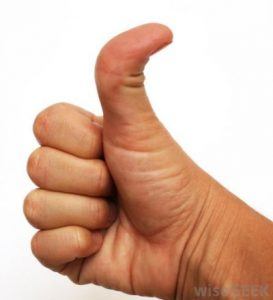Genetics, genes, inherited traits. Quirks and flaws passed on.
Mine, they suck.
I have benign hyper mobile joint syndrome. I’ve had it all my life but it’s only in the past 5 years with the knee issues and misdiagnosis of my symptoms being labelled as arthritis, then psoriatic arthritis, that I now know that being able to bend my fingers back into silly positions, being able to touch my toes and hyper flex my body so I can touch the ground with the palms of my hands, being able to click my jaw in and out, bend my thumbs to touch my wrists and having ankles so flexible that I used to regularly go over on them, and knees that seems to dislocate at a glance, is not just a quirk. It’s an actual thing. I can still wrap my legs around my neck (a trick I used impress my peers with at school) and there are bits of me that are super loose and flexible. My clicky knees and elbows use to reuse my peers in dance glass to fits of giggles when we did plies at the barre. Fun, you’d think?
Not really. Great for party tricks, but long term it’s not really fun. My joints are often painful, particularly when I wake up in the morning or after a long day on my feet. My knees are a major week area, for me, most of my joint issues focus there, although I have problems with shoulders too. My joints are more flexible but they are also much more prone to injury and damage. Pain is often an issue and it can limit your desire or ability to exercise which is tricky because you feel tired and sore but actually exercise is good for you and does help. You have to push yourself to exercise through the pain.
I’ve learned to live with this. It’s the body I’ve always lived with, and now I know my freaky joints have a name.
It sucks though because it’s genetic, you see and the suspicion that my girl has it, has been lurking in our minds for a while and today it was confirmed.
She’s had a long term knee injury, that we’ve finally got an solution for that, and it will get better.
But she also has hyper mobile joints and she too will have to learn to adjust her body to it’s quirks and creaks. It won’t go away. She won’t grow out of it. She will have to learn to exercise and push through pain, to keep her body fit, but also not to damage it. She will feel more tired and she will feel pain her peers won’t. She might be able to bend her thumb back in a rather gruesome way, but she also needs to learn to protect her joints because they make her more vulnerable to pain.
Genetics suck. I’m desperately sad that I’ve passed this quirk onto my child.
In the grand scheme of things it’s not life threatening and we won’t allow it to limit her, I’ve always refused to let it limit me, but it does mean a level of care to prevent pain, that her peers don’t have to worry about.
Sometimes I hate my body, I hate that it won’t let me have another baby, I hate that my scarred knees tell the tale of much damage done, I hate that my feet are warped from dancing and not enough care, and that I didn’t learn sooner that my “flexible joints” were actually a bit of a curse and I hate that I’ve passed that on.
Genetics suck, sometimes….
BJHS is diagnosed using the Brighton diagnostic criteria. ‘Criteria’ is a medical term for ‘features to look for.’ in the case of BJHS these are a combination of the Beighton hypermobility score and the child or young person’s symptoms. The Beighton hypermobility score is a 9-point scoring system based on little fingers, thumbs, elbows, knees and trunk. A score above 4 suggests the joints are hypermobile.
I fall into 7/9 on the score
Emily falls at 5/9. I hope this means she has milder issues than me. At least we know now and we can help her look after her body, protect it and learn what works and what doesn’t and hopefully my mistakes will help me help her.